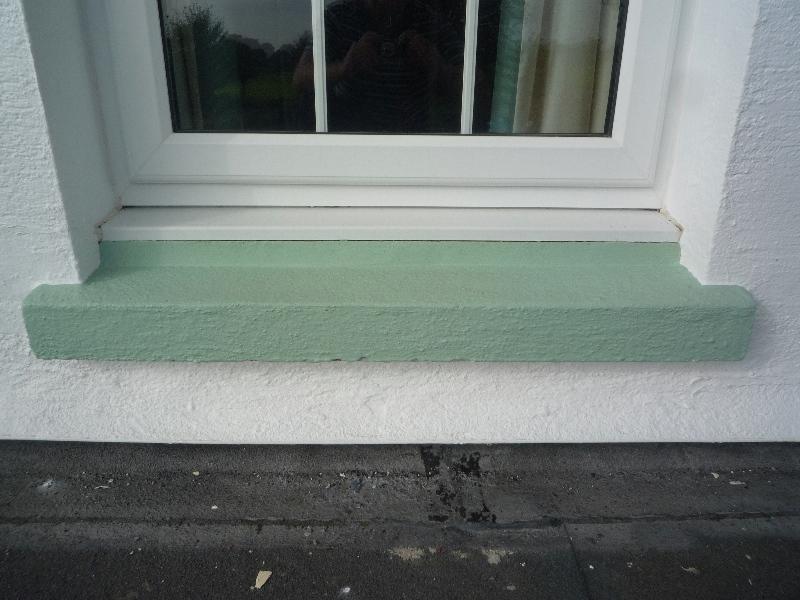I am having an absolute nightmare with my UPVC windows that were fitted just over a year ago - 70% of them are allowing water to penetrate into the building and I fear the original fitters have botched the job.
The problem is the fixing at the bottom of the window, the new windows were supplied with UPVC sills ( required in case the existing concrete ones were not cast deep enough according to fitter). These sills are set at varying heights above the existing sills - most between 30mm and 50mm. The rusultant gap at the bottom of each window has then been filled with expanding foam and finished with mortar. There is no silicone seal or other non permeable barrier to prevent water ingress.
Perhaps not suprisingly when we get driving rain water is penetrating through the gap between the PVC sill and the mortar, over the foam and into the wall cavity and eventually soaking into the walls.
The fitters have agreed that the fixing is not watertight but are adament that the installation is standard. I am not convinced by much of what they have told me - I have yet to see another intallation with a gap under a secondary UPVC sill.
The window manufacturers guidlines only specify a minimum gap for expansion although they do specify that a suitable elastic sealant should be used for all exterior seals (mortar was not 'elastic' last time I checked!)
Can anyone offer advice on whether this is indeed a common practice and what should I push for as a solution.
Any comments appreciated!!
The problem is the fixing at the bottom of the window, the new windows were supplied with UPVC sills ( required in case the existing concrete ones were not cast deep enough according to fitter). These sills are set at varying heights above the existing sills - most between 30mm and 50mm. The rusultant gap at the bottom of each window has then been filled with expanding foam and finished with mortar. There is no silicone seal or other non permeable barrier to prevent water ingress.
Perhaps not suprisingly when we get driving rain water is penetrating through the gap between the PVC sill and the mortar, over the foam and into the wall cavity and eventually soaking into the walls.
The fitters have agreed that the fixing is not watertight but are adament that the installation is standard. I am not convinced by much of what they have told me - I have yet to see another intallation with a gap under a secondary UPVC sill.
The window manufacturers guidlines only specify a minimum gap for expansion although they do specify that a suitable elastic sealant should be used for all exterior seals (mortar was not 'elastic' last time I checked!)
Can anyone offer advice on whether this is indeed a common practice and what should I push for as a solution.
Any comments appreciated!!


